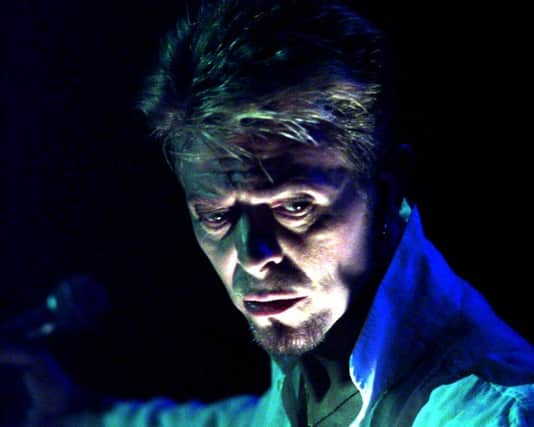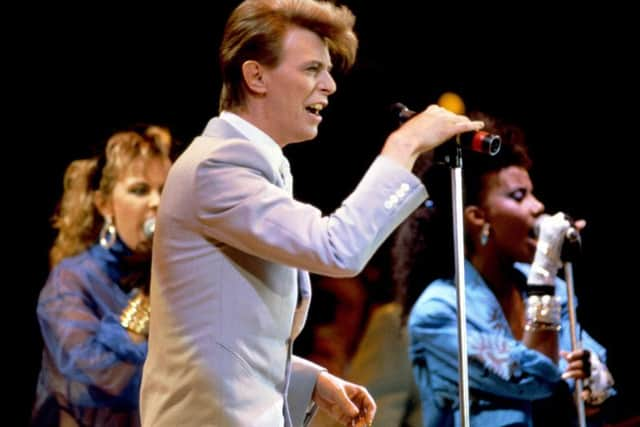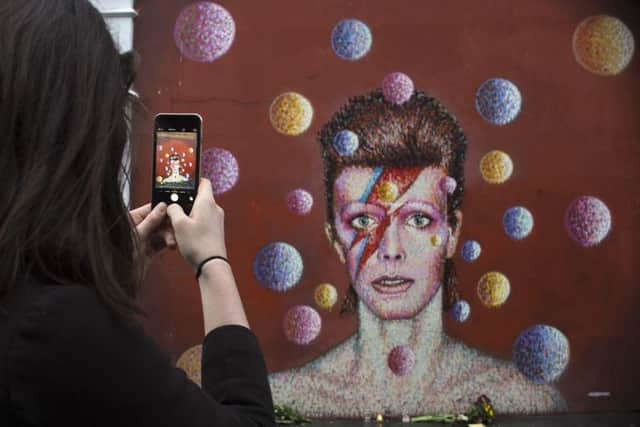Shock and awe for star who '¨fell to Earth


His larger-than-life persona, ever-evolving image and willingness to take on any form of music and make it his own made him a legend in his own lifetime, almost a one-man genre that defied being categorised.
During his career Bowie turned his attention to multiple genres, never pausing for a moment to look back and always looking to a new horizon.
Advertisement
Hide AdAdvertisement
Hide AdLike many young men of his age Bowie had the course of his life inextricably altered upon hearing rock ’n’ roll for the first time, likening his first exposure to Little Richard to “hearing God”. In 1967 he changed his surname to Bowie after the American explorer for whom the iconic knife is named.


In 1969, five days before man landed on the moon, he released Space Oddity which charted in the top five but in the aftermath he struggled for more hits.
In 1972 his desire to push boundaries resulted in him reinventing himself as Ziggy Stardust. In an era of beards and long hair, Bowie’s flamboyant outfits, shock of ginger hair and lack of eyebrows could not have been more out-of-step. The success of the resultant album The Rise and Fall of Ziggy Stardust and the Spiders from Mars and the follow-up Aladdin Sane gave him international attention and spawned the genre of glam rock.
But at the height of his fame Bowie abruptly killed off the character and reinvented himself as The Thin White Duke with a more soul-orientated sound that brought him further success.
Advertisement
Hide AdAdvertisement
Hide AdBowie recorded and toured extensively during this period, releasing 10 albums between 1971 and 1979. He temporarily relocated to Berlin where he kicked a dangerous drug habit and produced more hit singles such as Sound and Vision and Heroes, with the latter becoming one of his most-celebrated songs which was used to accompany the British athlete’s’ entrance into the stadium at the London 2012 Olympic opening ceremony.


As a new decade began Bowie collaborated with Queen on hit single Under Pressure as well as his own Let’s Dance, China Girl and Modern Love. He reached a younger audience by starring in Labyrinth and toured the world several times as well as playing a well-received slot at Live Aid.
The 1990s saw his commercial and artistic success wane but he found love with his new wife Iman Abdulmajid. He continued to write and record until the middle of the last decade when ill-health saw him temporarily retreat from public life.
In January 2013 he once again shocked the world by announcing a new record The Next Day and the immediate release of a new single and video Where are We Now? one the year’s most successful albums and a number one in the UK.
Advertisement
Hide AdAdvertisement
Hide AdIt was typical of Bowie that his final album, Blackstar, released just two days before his death, was one of his most musically-adventurous to date, taking in avant-garde jazz and art-rock influences.
Memories of the starman: Page 9; Comment: Page 10.